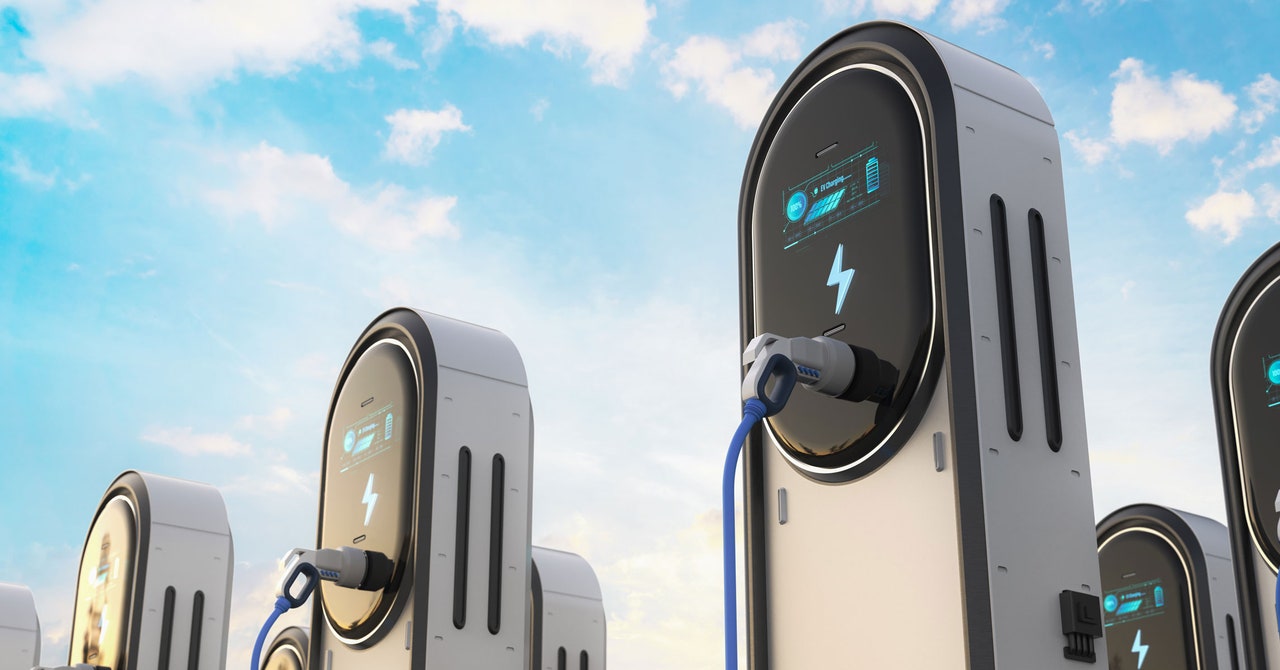Universal Plug-and-Charge for EV Charging Stations Is Set to Launch in 2025 Leave a comment
To fill a automobile with gasoline, you typically simply want a bank card or money. To cost an EV at a DC fast-charging station, you want any variety of issues to work—a bank card reader, an app for that charger’s community, a touchscreen that is working—and so they’re all just a little totally different.
That state of affairs may change subsequent yr if a brand new “common Plug and Cost” initiative from SAE Worldwide, a bunch of EV carmakers and chargers, strikes forward and positive factors floor. Launching in early 2025, the community may make charging an EV truly simpler than gassing up: Plug in, let the automobile and charger work out the cost particulars over a cloud connection, and go.
Some automobile and charging community mixtures already supply such a system via a patchwork of particular person offers, as listed at Inside EVs. Teslas have all the time provided a plug-and-charge expertise, given the tight integration between its Superchargers and automobiles. Now Tesla will be part of the plug-and-charge motion correct, permitting Teslas to have a roughly comparable expertise at different stations.
The Electrical Automobile Public Key Infrastructure, or EVPKI, has variety of the key gamers on board, and it builds on the ISO customary (15118) to make it sooner and safer for automobiles to be authenticated and approved to cost at stations. A complete bunch of certificates are in place at each step of the charging course of, as detailed in an EVPKI presentation, and the system features a Licensed Belief Record. With an open customary and authentication system, there needs to be room for brand spanking new charging networks and car makers.
Charging networks can and certain will proceed to supply incentives for model loyalty, whether or not via apps or rewards factors. However new EV house owners won’t must do fairly a lot work to determine “the nice ones” whereas on highway journeys.
By getting automobiles linked as much as key-based authentication techniques, there’s additionally the prospect that this initiative may also push ahead vehicle-to-grid (V2G) charging, wherein the massive batteries in automobiles can be utilized to steadiness regional energy masses and make the grid extra resilient.
“We’re quickly approaching a future the place each EV driver can simply plug in, cost up, and go; the community will discuss to your automobile and course of the cost seamlessly,” Gabe Klein, govt director of the Joint Workplace of Vitality and Transportation, mentioned in a press release. “This can be a elementary step in structure towards enabling bidirectional charging and true vehicle-to-grid integration, the holy grail for power and transportation.” The Joint Workplace is a collaboration between the Departments of Vitality and Transportation.
The EV Hummer-sized elephant within the room is how the incoming Trump administration, with its acknowledged opposition to the Biden administration’s EV insurance policies, may have an effect on this initiative. Klein informed The Verge that, with buy-in and actual work performed by automakers and the trade—together with the Elon Musk–led Tesla—”the ship has form of sailed, if you’ll.”
This story initially appeared on Ars Technica.

